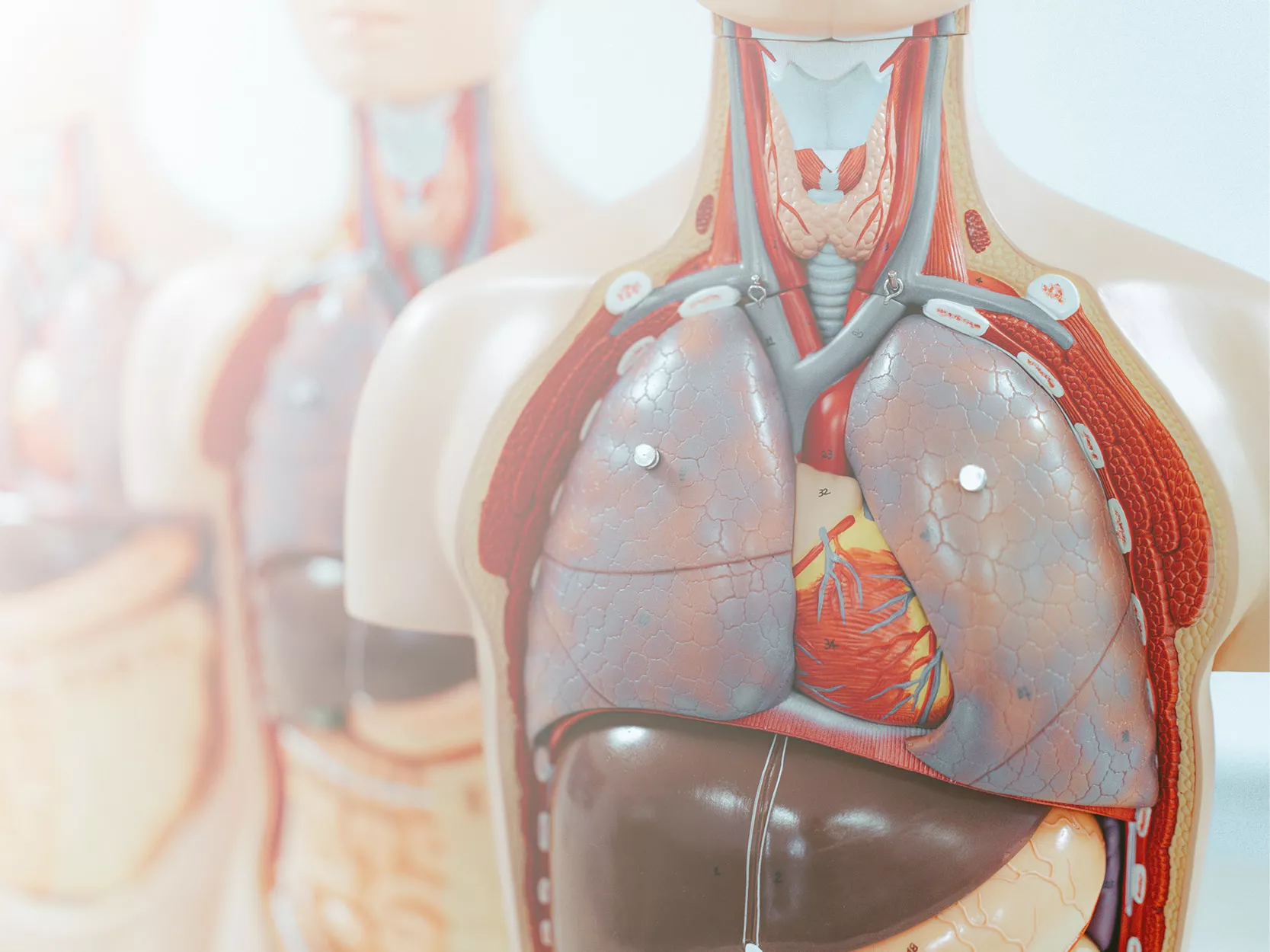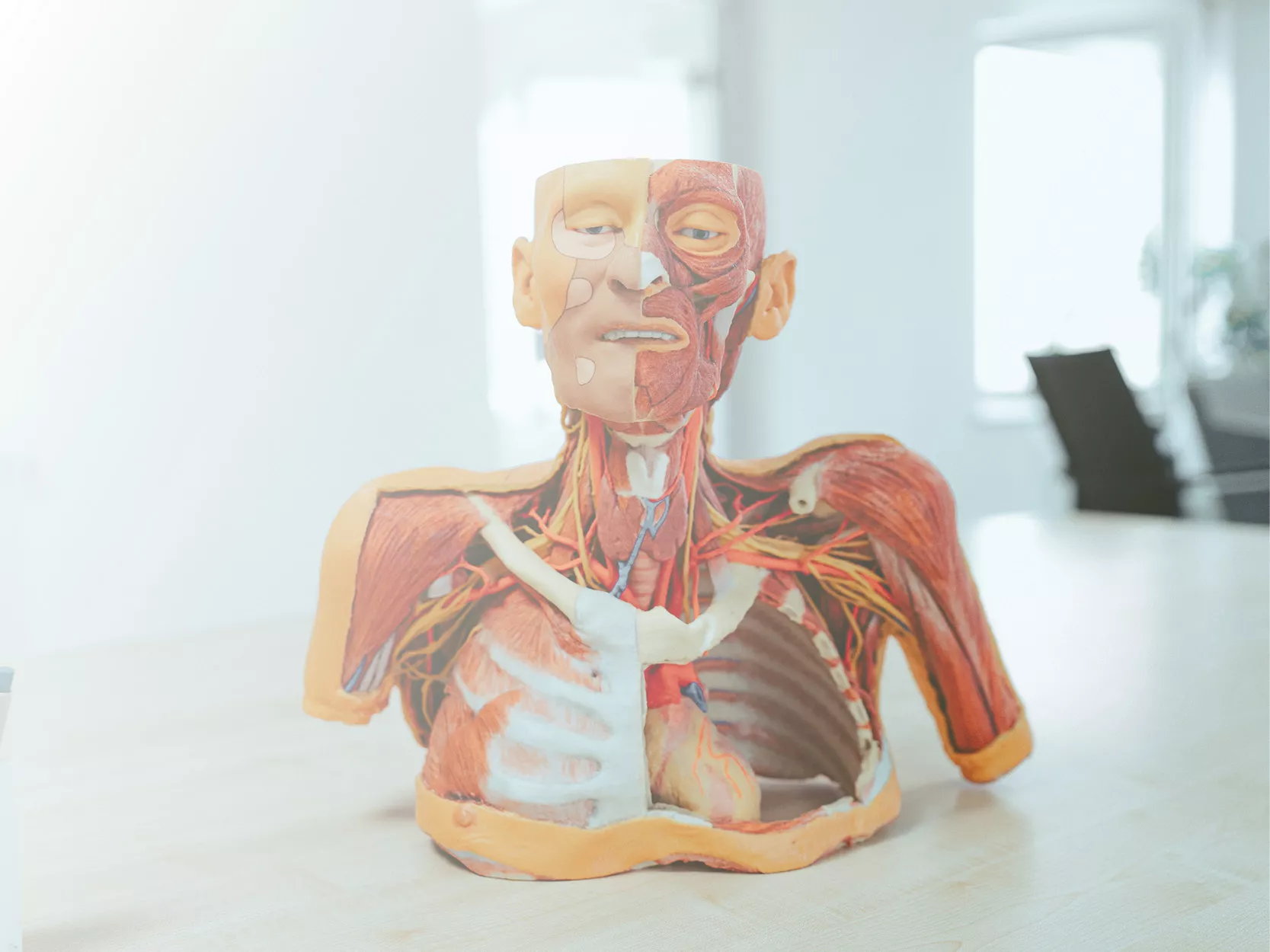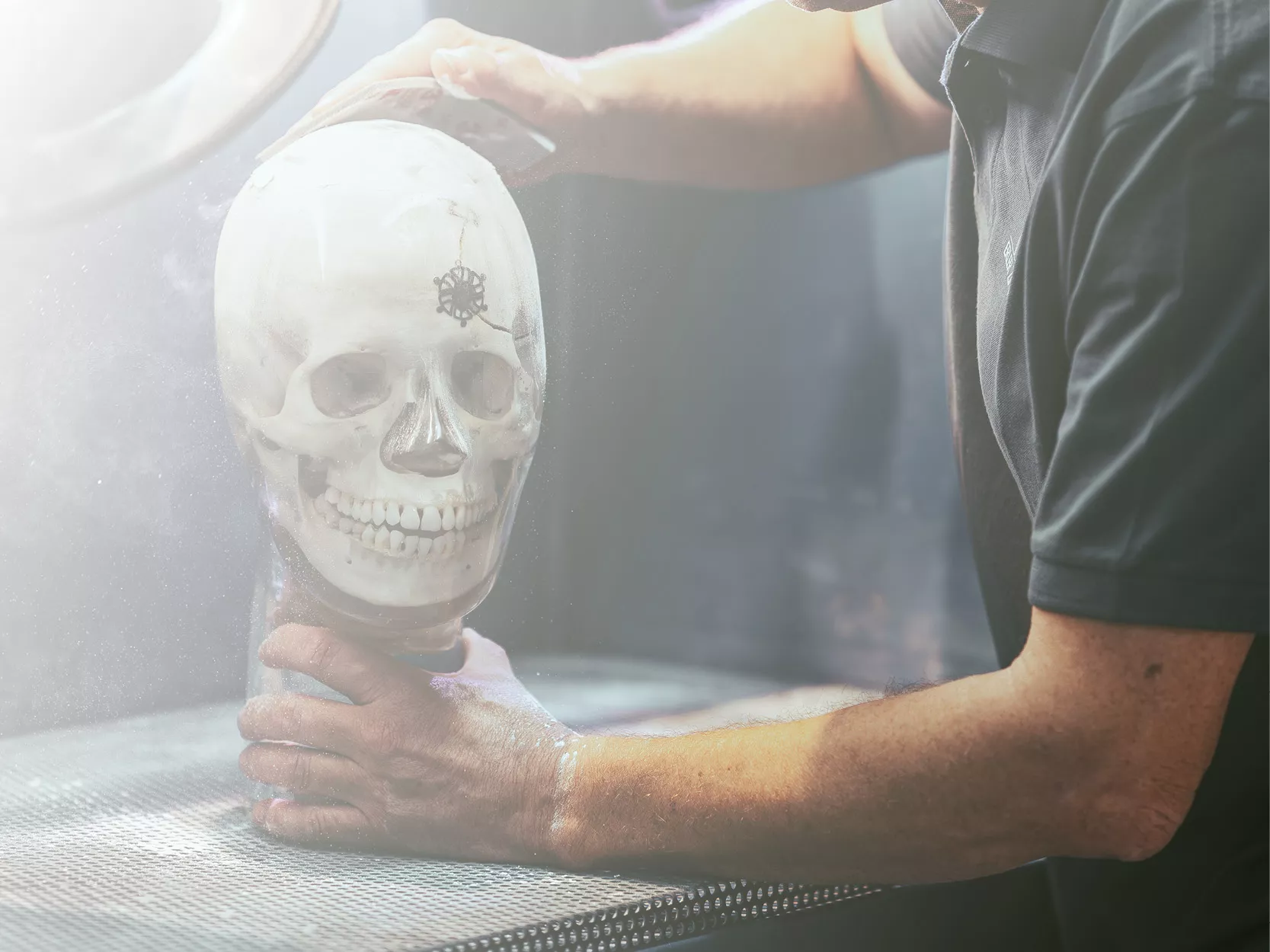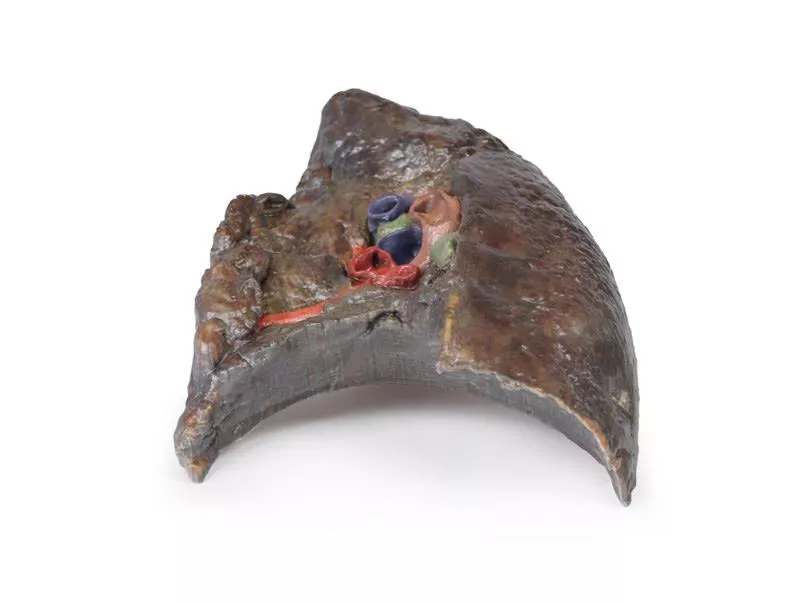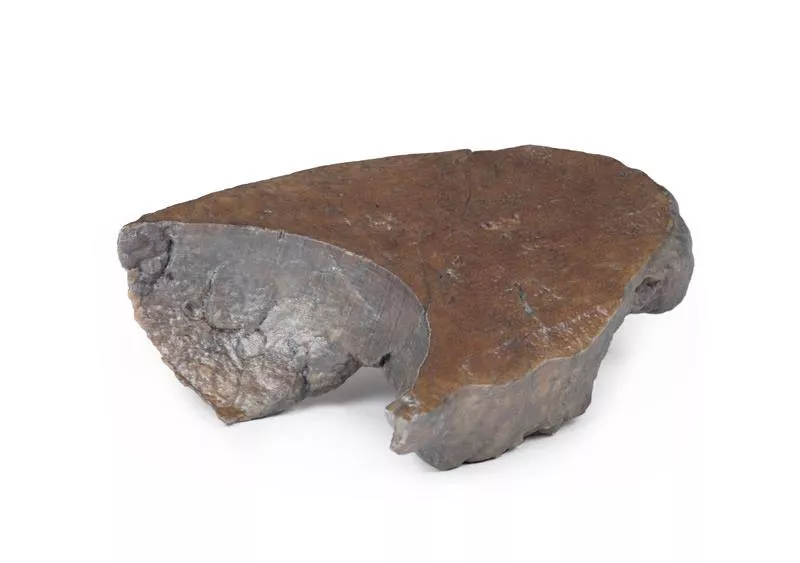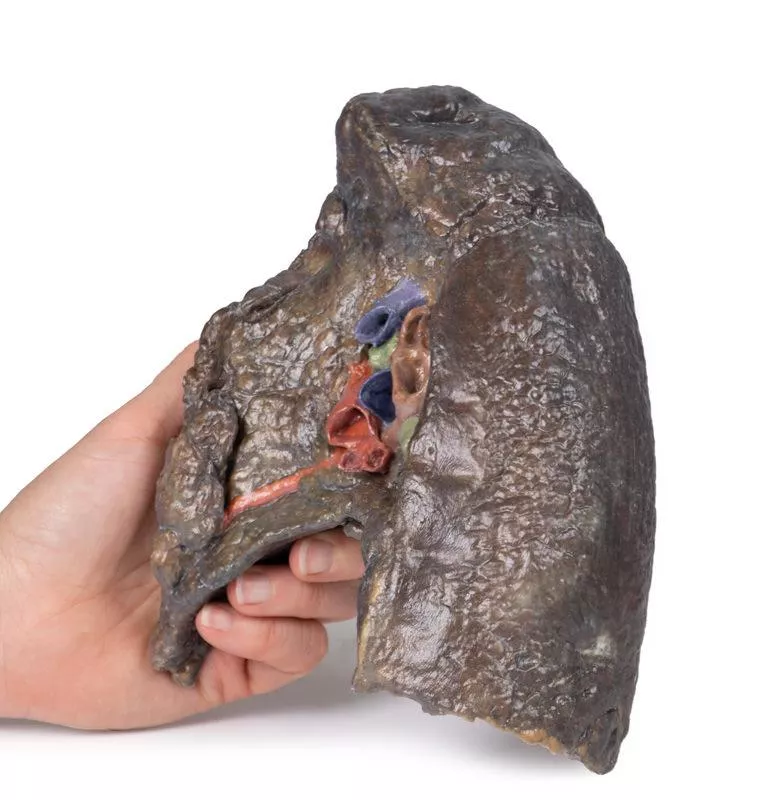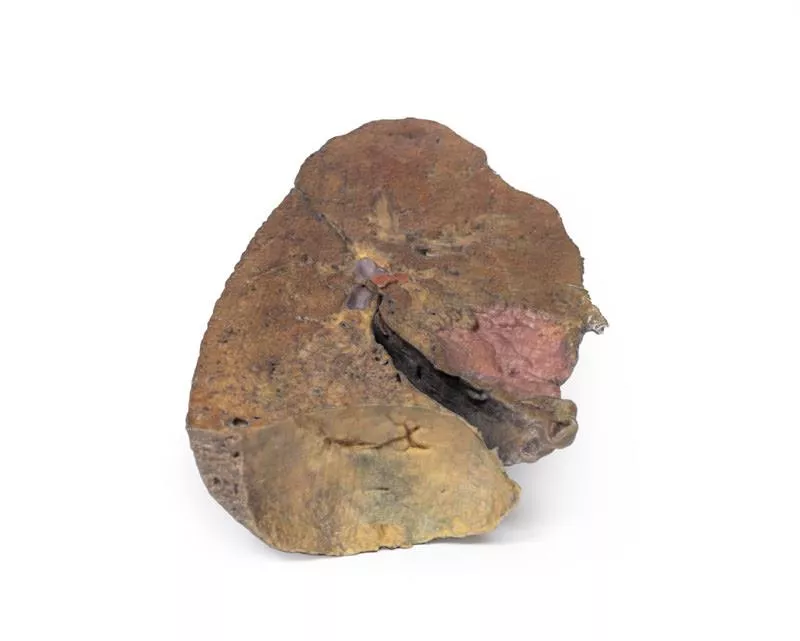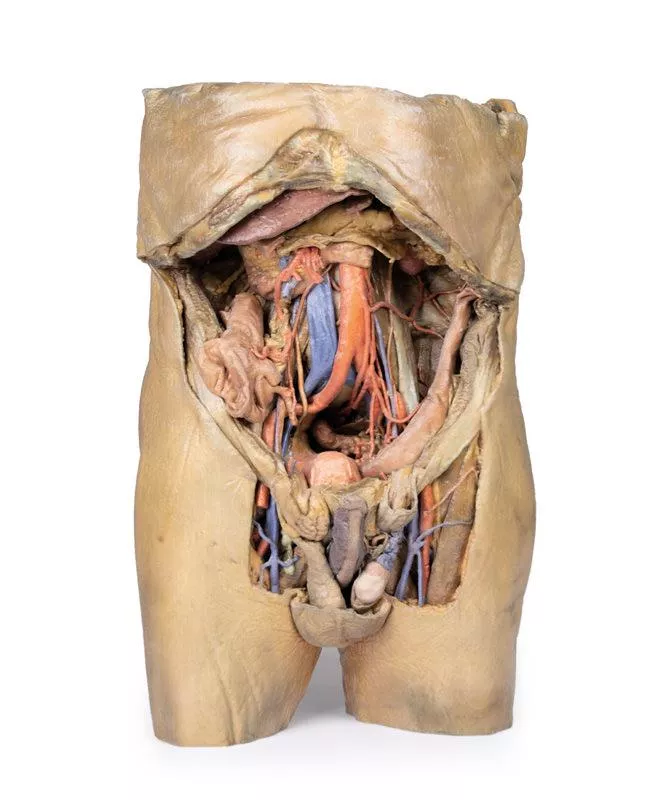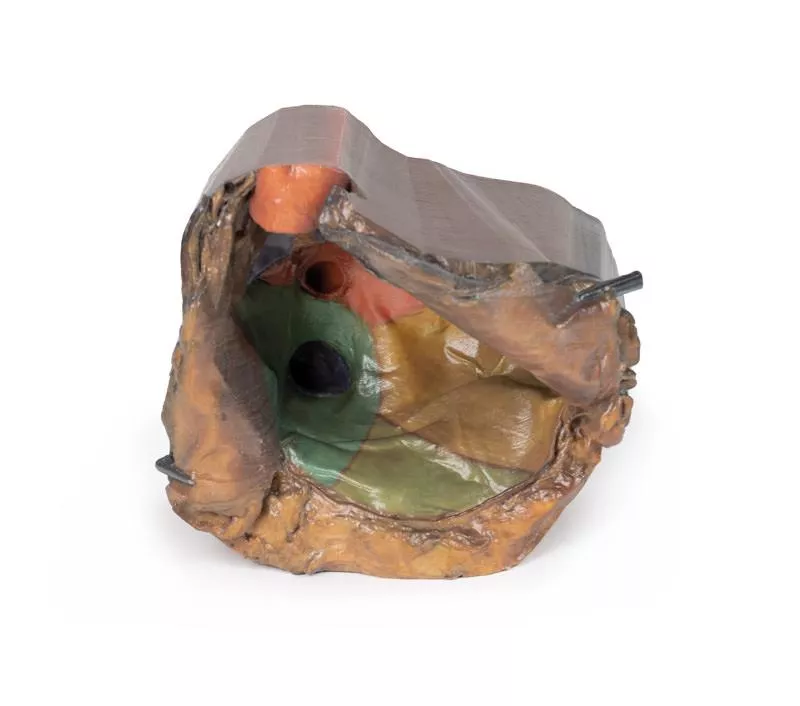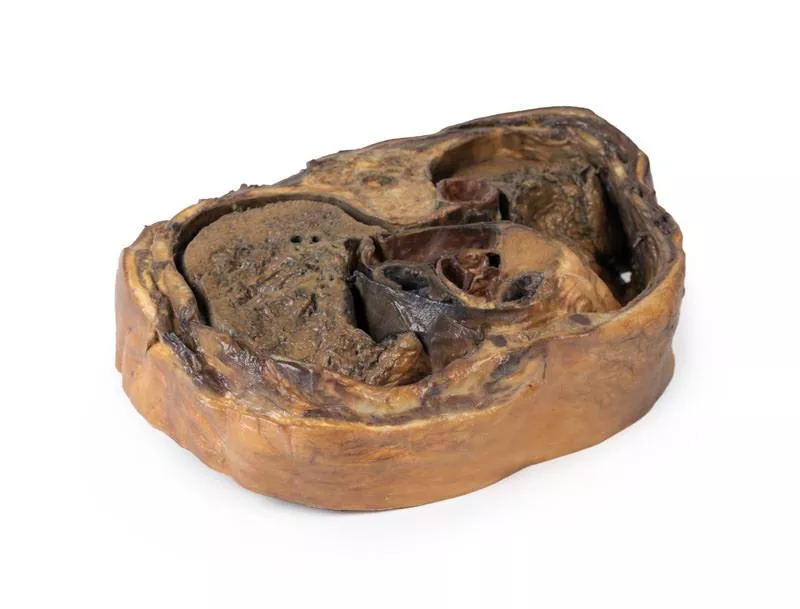Product information "Hilum of the right lung"
This high-quality 3D model presents a sagittal section of the right lung, focused on the hilum, where key anatomical structures enter and exit the lung.
It serves as an essential tool for understanding pulmonary vascular and bronchial anatomy, with clear orientation from apex to base and medial to lateral surfaces.
Key Features:
Hilum Structure:
- The hilum marks the transition between visceral and parietal pleura and serves as the lung’s only anatomical connection to the body via the pulmonary ligament.
- Major structures entering the lung at this point include:
Visible Anatomical Landmarks:
- Cardiac impression (formed by the right atrium) is visible just anterior to the hilum.
- The oesophageal groove is preserved along the posterior surface, tracing the path of the descending oesophagus.
- Oblique and horizontal fissures are well-defined on the lateral surface, demarcating the lung's three lobes.
- Hilar lymph nodes are observed around the medial hilum.
Lung Surfaces:
- Diaphragmatic surface (inferior), showing the concave interface with the diaphragm.
- Costal visceral surface (posterior), where the lung contacts the thoracic wall.
It serves as an essential tool for understanding pulmonary vascular and bronchial anatomy, with clear orientation from apex to base and medial to lateral surfaces.
Key Features:
Hilum Structure:
- The hilum marks the transition between visceral and parietal pleura and serves as the lung’s only anatomical connection to the body via the pulmonary ligament.
- Major structures entering the lung at this point include:
- Pulmonary artery (superior in the hilum) – carrying deoxygenated blood from the heart.
- Superior and inferior pulmonary veins (anterior and inferior) – returning oxygenated blood to the heart.
- Right main bronchus and its lobar branches – located posteriorly in the hilum.
- Associated nerves and lymphatics.
- Superior and inferior pulmonary veins (anterior and inferior) – returning oxygenated blood to the heart.
- Right main bronchus and its lobar branches – located posteriorly in the hilum.
- Associated nerves and lymphatics.
Visible Anatomical Landmarks:
- Cardiac impression (formed by the right atrium) is visible just anterior to the hilum.
- The oesophageal groove is preserved along the posterior surface, tracing the path of the descending oesophagus.
- Oblique and horizontal fissures are well-defined on the lateral surface, demarcating the lung's three lobes.
- Hilar lymph nodes are observed around the medial hilum.
Lung Surfaces:
- Diaphragmatic surface (inferior), showing the concave interface with the diaphragm.
- Costal visceral surface (posterior), where the lung contacts the thoracic wall.
Erler-Zimmer
Erler-Zimmer GmbH & Co.KG
Hauptstrasse 27
77886 Lauf
Germany
info@erler-zimmer.de
Achtung! Medizinisches Ausbildungsmaterial, kein Spielzeug. Nicht geeignet für Personen unter 14 Jahren.
Attention! Medical training material, not a toy. Not suitable for persons under 14 years of age.




